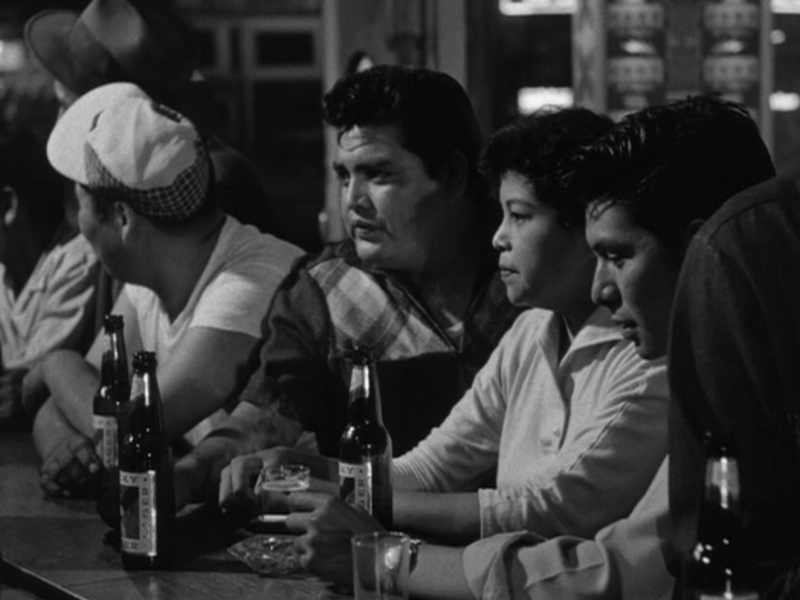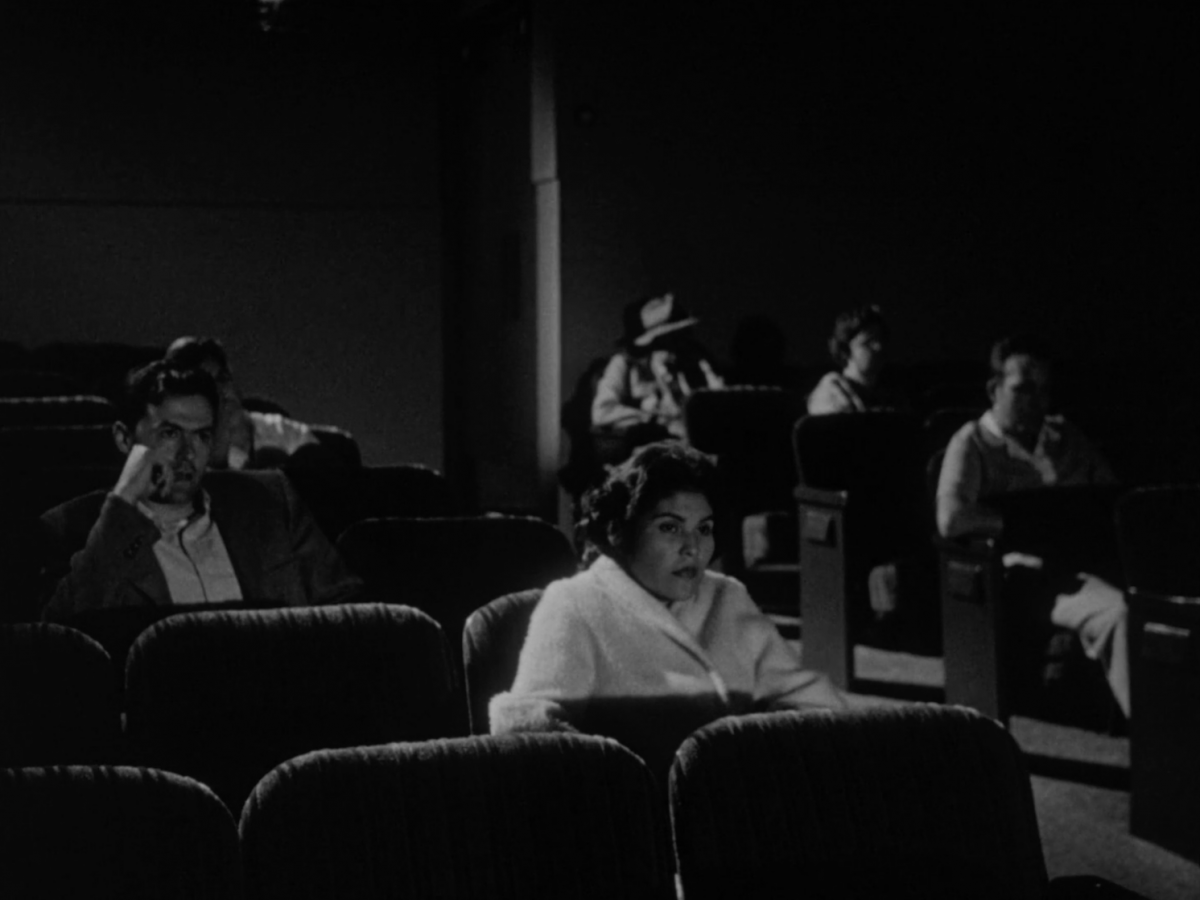
The story of one wild but typical night in the lives of three young American Indians who have left their reservations to live in downtown Los Angeles
“Homer, Yvonne and Tommy are involved in a deeply complex and confused situation, roughly that of being unwilling to adapt to the current dominant culture, and unable to return to the ancient forbears. I wanted to reveal all the facets of their dilemma, including the question, ‘Are they actually aware of their situation?’ No theatrical or documentary approach – in which a problem is stated and the decisions and actions of the characters proceed either to achieve or suggest a patent solution – seemed suitable for the film. The situation in which these people are involved could not be brought to a stage and re-enacted. The thousands of details involved in their environment could never be duplicated. So, we decided to shoot the entire film on location, and subordinate direction, action, movement and lighting so that the surroundings, actions and reactions of these people would, on film, honestly portray their situation and emotions.”
Kent Mackenzie1
“Somehow the ‘real people,’ as the introductory titles designate them, seem to end up in a fiction, and the actors in a documentary.”
Thom Andersen2
“Like Charles Burnett’s Killer of Sheep, The Exiles is a gritty and poetic, frills-free depiction of a marginalized Los Angeles community. Both films did not get theatrical release; were featured in Thom Andersen’s film Los Angeles Plays Itself; and were restored by Ross Lipman at the UCLA Film & Television Archives.”
Milestone Films3
“Most of the crew members of The Exiles were young film makers who had been out of the University for two or three years. We had outlived the romance of our first jobs and had discovered that the industry was not waiting with open arms to welcome ‘young geniuses,’ particularly those interested in reality. When we looked at the films on which we were employed and the films in the theaters and on television, we were puzzled. In very few of them did we see any reflection of the life we saw around us or any attempt to examine real questions and problems. We reacted strongly against what we perceived in these films, and this energy became one of the forces which led to the production of The Exiles.”
Kent Mackenzie4
“The Exiles has been exhibited at several festivals, and took first prize at Mannheim. It has not yet been shown in American theatres – and there is some doubt that it will be, as it makes no concessions to the box-office. But, in the future, those who are interested in the American motion picture, are likely to refer to 1961 not in terms of the big Hollywood productions, but as the year of The Exiles and Sunday.”
Pauline Kael5
“I have been going out to movies almost every night for a few days, and it has helped my confidence a lot – I don’t mean that we do better, but that certainly guys with interests like ours are no longer standing alone. Most impressive film I’ve seen in years was 400 Blows, although a lot of disappointing things about it. The Mistress was a real dog, but Aparajito I liked, although I didn’t feel as close to it as 400 Blows. Over the weekend I’ll take in The Lovers and Wild Strawberries so don’t be surprised when you see our film to see different styles in all sequences, depending on what I saw the night before I did the final trim.”
Kent Mackenzie6
Listen to Charles Burnett and Sherman Alexie speak about the film here:

- 1Kent Mackenzie in a promotional flyer for the Edinburgh Film Festival, 1961.
- 2Thom Andersen, “Happy Daze”. Film Comment 46, no. 2 (2010): 20.
- 3Milestone Films, promotional text accompanying the trailer.
- 4Kent Mackenzie, “A Description and Examination of the Production of The Exiles: A Film of the Actual Lives of a Group of Young American Indians”, Los Angeles: University of Southern California, (1964): 6.
- 5Pauline Kael, as quoted in the press kit, 2009.
- 6Kent Mackenzie in a letter to cameraman Erik Darstaad, 1959.